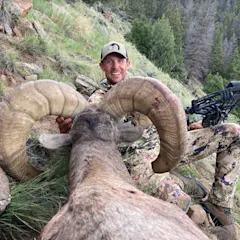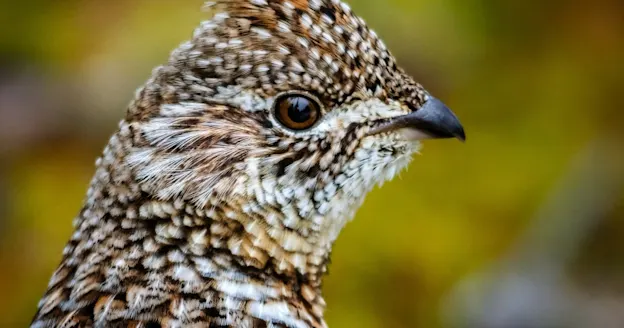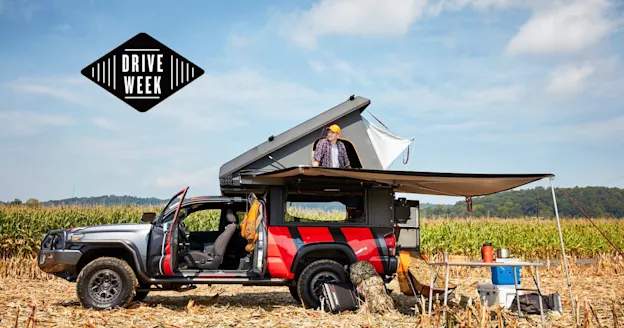On TV, YouTube, social media, and just about everywhere else you look, hunters seem to be celebrating the same thing: public land. But just how are you supposed to hunt this incredible resource? The truth is, punching your tag on land that’s open to anyone is hard—especially now, with everybody talking about how great it is. The competition is steep, the animals are pressured, and you usually need to cover a lot of ground just to find them. But that doesn’t mean it isn’t worthwhile. With the right know-how, you can separate yourself from the hordes of hunters who try their luck every year on public dirt. To give you a leg up, we asked some of the best DIY public-land hunters we know how they consistently find and shoot whitetails, mule deer, pronghorn, and elk all over the country, every year.
1. Grade It
Hunting pressure on public land has increased exponentially over the past few years, and I’ve learned that best-looking ground on an aerial image will almost always attract the most hunting pressure.
Thus, I’ve adopted a simple grading system. “A” properties are those killer-looking parcels filled with all the good stuff. “B” properties are solid habitat with some sort of shortcoming—whether they’re small acreages, primarily marginal habitat with some solid spots mixed in, etc. “C” ground is just what you’d expect. It’ll harbor some deer, but it’s far from prime. And “D” properties are those that likely aren’t going to produce much due to lack of habitat, obvious signs of heavy cattle use, or other undesirable traits.
My process is simple: I don’t waste any time on A-grade ground. My attention is solely on B and C stuff. I give the B properties a quick drive-by. Any sign of hunting pressure, and I’m on to the next. In most instances, I’ll find a couple of Bs that are relatively unpressured and several Cs. —Tony Hansen
2. Show Up Late
A common tactic to avoid public-land crowds is to be the first vehicle parked in the lot. The concept is that by doing so, you’ll beat others to the prime spots. And you will. But I’ve learned the hard way that doesn’t mean you won’t get to that prime spot nice and early and still have someone walk in on you at daybreak.
Consider the opposite approach. Delay until about 30 minutes before sunup. You won’t be the first at the parking area, and that’s the point. I’d much rather hunt an area free of hunting pressure (even if I have to sneak my way in as the sun rises) than to secure a prime location in a spot that will soon have others walking by it. —T.H.
3. Hunt Where Others Don’t Look Twice
Look for overlooked spots. Most public land gets lots of pressure, and big bucks learn to live in small areas everyone walks right past. Some of my very biggest and oldest public-land bucks have come from spots right alongside the road in between parking lots. —Dan Infalt
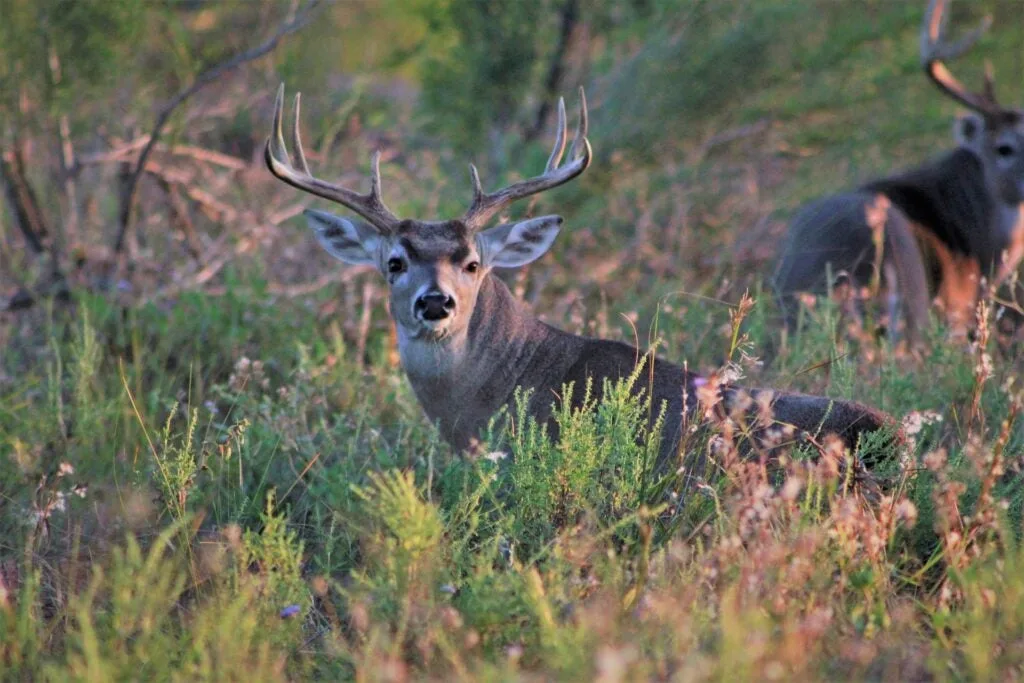
4. Know Where the Water Is
You have to expect the unexpected on any DIY public-land hunting trip. The weather can be too hot or too cold. The wind can howl. The ground can be dry and crunchy. However, one thing you can count on is water. All animals need water, and if you know where the best water sources are, you’ll always have an ace up your sleeve.
In many areas, especially in the West, water is the number one limiting factor in terms of good habitat, so it provides the perfect starting point for a hunt on unknown ground. Find water on your mapping app ahead of time, then go scout it when you get to your hunting area. More often than not, you’ll find good habitat, plenty of sign, and a great place to start your hunt. —Jace Bauserman
5. Get Out Early
I’m not afraid of the dark. But bumping the deer I’m trying to hunt as I leave an area, frightens me just a bit. The key to hunting old bucks on public land, for me, is hunting bucks that feel secure enough to move in daylight. But you can turn that off pretty quickly by bumping into them in the dark when leaving a stand site.
Getting out of a stand location in the evening is always a challenge. I make it a bit easier by making my evening departure when I feel no deer are in the area, even if there are a few minutes of legal light left. It’s a balancing act. I’m not bailing out early in that last prime hour of daylight. But when I have just 10 to 15 minutes of legal light left, and I know the odds of seeing a good buck and getting it into range are steep, I’ll get out of the stand and get out of the woods before something moves in at last light and I run the risk of bumping it during my departure.
—T.H.
6. You Don’t Gotta Go Deep!
Over the past two decades, it’s been drilled into our brains that if we’re going to find elk nirvana, we must wander as far off the beaten path as possible. If there is a road within two miles, the spot can’t be any good. Wrong! Elk are where you find them, and with more hunters walking past good elk dirt in hopes of finding great elk dirt, you can kill a bull a mile or less from access roads. Use a digital map and mark up no less than 10 close-to-access-road locations before your hunt. Stay mobile and pop in and out of spots quickly. If the elk are there, hunt them. —J.B.
7. Keep Moving
When hunting public-land whitetails, don’t camp out in one spot. Even though we all have some great spots that produce year after year, the majority of my mature buck kills have come from first-time sits. —D.I.
8. Go Solo, But Take A Decoy
Yes, elk hunting is easier with a partner, especially when calling to savvy public-land bulls. But if you can’t find a buddy or two to go in with you on your wapiti adventure, go solo. Before you do, though, be sure to get a bow-mounted elk decoy from Ultimate Predator
. The manufacturer offers a Cow Elk Front and a Cow Elk Back. Both work great and mount easily to your bow via Velcro Spider Straps. Your stabilizer and sight fit through the decoy’s window, and the rest of the fabric conceals you. It ensures that when that bull hangs up and expects to see a cow, he does. —J.B.
9. Shoot Twice
Rifle hunters seldom hesitate to take follow-up shots if given the chance. Bowhunters on public land should follow suit. Tracking a deer on public ground can be a big-time gamble, particularly if private land is nearby.
Most landowners will allow you to trail a deer across their property—but not all. And most hunters who happen across a solid blood trail or a buck that someone else shot are more than happy to leave it be or assist the successful hunter in the recovery—but not all.
I try not to leave things to chance. If I can get a second arrow in a buck that I’ve shot, I will. Even if I know the first shot was in the vitals.
—T.H.
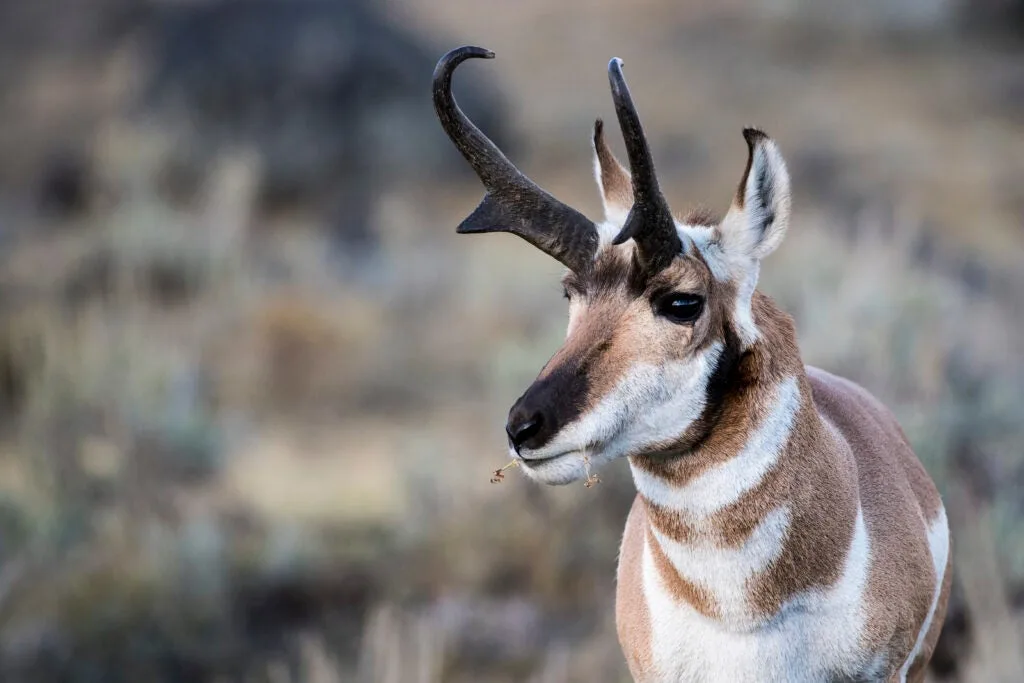
10. Back Off a Bit for Pronghorn
Pronghorn that wander America’s public lands aren’t stupid. Unfortunately, you don’t have weeks to let resident speed goats get used to a ground blind set—you only have days. So you need to have a good plan. A ground blind 20 yards off a tank of water that stands out like a turd in a punch bowl will get noticed. When planning a waterhole ambush that requires setting up a ground blind and hunting it that same day, back the blind up to 40 yards. Give approaching antelope space. Doing this will significantly up your odds of success. —J.B.
11. Consider Parking
Considering the ease of access to a public area is not an original thought. Plenty of hunters will look for those out-of-the-way public areas that are difficult to access. But how often do you consider the size of the parking area for the public land you hunt?
I look for the smallest parking areas I can find. Why? A small parking lot means fewer vehicles can fit. Fewer vehicles mean less hunting pressure. And while accessing public areas without designated parking can be a real chore, it’s a chore I am happy to tackle.
—T.H.
12. Don’t Burn Your Spot Before The Hunt
Do not go to the spot you intend to hunt until you intend to hunt there. Bucks can smell where you’ve been for days and will vacate areas where human scent suddenly shows up. —D.I.
13. Do More Scouting Than Hunting
Finding good spots on public land is usually a process of elimination, in which you eliminate about 95 percent. There are exceptions, but on many public tracks there are only a handful of really good spots in a sea of so-so and poor spots. Finding those take a lot of time and boot leather. So if you’re planning a trip to unfamiliar ground, pour over digital maps ahead of time and when you get there, give yourself at least a day to do nothing but scouting and glassing before the hunt. Scout at midday ever day during the hunt. And skip a hunt to scout if you’re not getting on animals. If you’re hunting public land near home, scout it all year long to get to know every inch of every parcel to find those few hidden honey holes. —Scott Bestul
14. Be Ready When Disaster Strikes
Every public land bowhunter should have a complete bow repair kit. You don’t have to tote it into a spike camp, but it should be at your truck or base camp. Things can go wrong in a hurry in the backwoods, and if something happens to your compound and you have some bow-fix essentials, you’ll lose a half-day instead of two or three bombing off the mountain to find a pro shop. Your kit should include three pre-cut d-loops, a lighter, serving material, correctly sized Allen or Hex wrenches, d-loop pliers, an extra sight, an extra rest, and an extra rest cord. —J.B
15. Camp Is For Rest And Nothing Else
It’s easy to get lazy on a backcountry hunt and become a camp lounger. But you only have a handful of days to punch your tag, and you’re not going to do it from camp. The only time you should be at camp is when you plan to sleep for the night. Stay in the woods. If you need a nap, take one on an open ridge where a bugle will wake you or close to a wallow where a midday bull may wander. —J.B.
16. Find The Beds And You’ll Find a Buck
Hunt close to bedding if your goal is to tag a mature buck. Many of the biggest bucks I’ve shot were shot right on the edge of bedding, and often within the last or the first few minutes of daylight. Mature bucks do not travel far in daylight. —D.I.
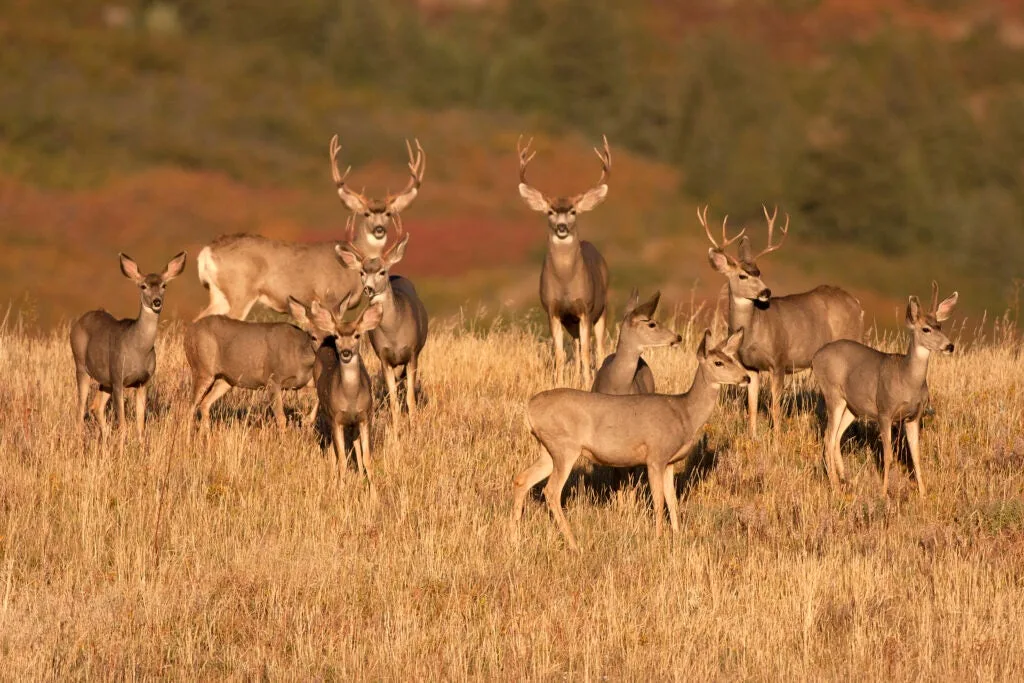
17. Try A Fawn Distress Call
It doesn’t always work, but when you feel like you’ve exhausted all options and can’t get within bow range of a mule deer buck, try a fawn distress call. Does tend to come to investigate the sound of a bawling fawn, and if the rut is near, there’s a solid chance they will bring a buck with them. You can also use the call to stop deer in their tracks for a shot. —J.B.
18. Take the Back Door
Accessing public land from private ground is a great way to hunt the backside of parcels that other hunters rarely visit. I’ve had great luck doing this when chasing bow-season whitetails on WMAs throughout the Midwest. The key is to use your mapping app to locate decent-sized parcels where all the access (or the only access) is on one side, and the other side is entirely cut off by private land. Then start knocking on doors. Most people will probably say no, but if you explain that you don’t want to hunt their place but just want discreet access to the public, some will say yes. And when they do, you’ll have a free pass to unpressured ground. —S.B.
Read Next: A 10-Step Guide to Killing a Great Public-Land Buck
19. Adjust Your Goals and Have Fun
There are a handful of public tracts that offer as much trophy potential as anywhere else, so I’m not saying you should always lower your standards on public. But there are also plenty of public spots where I would consider almost any deer a trophy. So just go have fun and take whatever animal trips your trigger, knowing that the extra challenge and satisfaction of hunting on ground open to everyone will be part of the reward. —S.B.


